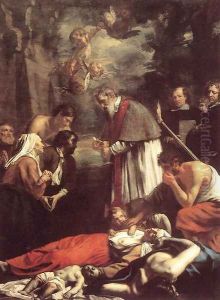The Younger Jacob Van Paintings
Jacob van Ruisdael, born in 1628 or 1629 in Haarlem, Netherlands, is one of the most prominent and skilled landscape painters of the Dutch Golden Age. Although his exact birth date is uncertain, Ruisdael's profound impact on the development of landscape painting is well-documented. He was part of a family of artists, with his father Isaack van Ruysdael being a painter and his uncle Salomon van Ruysdael also a noted landscape artist. This environment nurtured his talents from an early age, although he initially trained as a surgeon and only later fully committed to his art career.
Ruisdael's work is characterized by dramatic use of natural scenery, often depicting the Dutch countryside in a way that emphasizes the beauty and power of nature. His landscapes are not just representations of real locations but are imbued with a sense of emotion and mood that was innovative for his time. He was adept at portraying the sky, water, and foliage with remarkable realism and detail, and his works often feature waterfalls, ruins, and vast expanses of forest, all rendered with a dramatic and sometimes melancholic tone.
Despite his mastery, Ruisdael was not commercially successful during his lifetime, and his works only gained the recognition they deserved posthumously. He was a prolific artist, with some estimates suggesting he produced between 700 to 800 paintings, drawings, and etchings. His influence on the landscape genre was profound, impacting not only his contemporaries but also future generations of artists, including the Romantics and the Hudson River School in America.
Jacob van Ruisdael died in Amsterdam in 1682, leaving behind a legacy that firmly places him among the pantheon of great landscape artists. His ability to evoke the sublime beauty of nature, combined with his technical skill, has ensured his status as a key figure in the history of art. His works are now prized in major museums around the world, celebrated for their depth, beauty, and emotional power.
